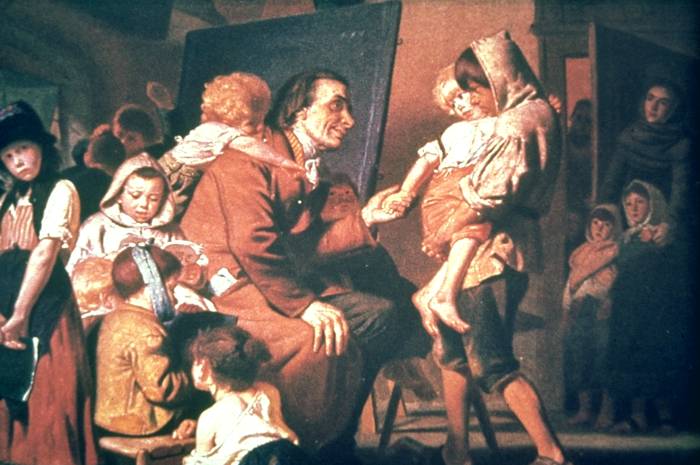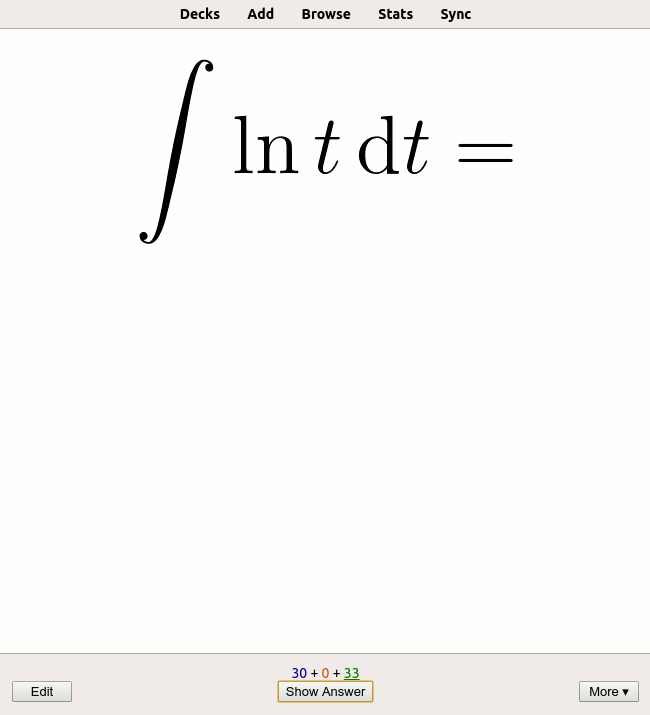|
Oswego Movement
The Oswego Movement (or Oswego Plan as it is sometimes called) was a movement in American education during the late 19th century. It was based on the methods of Johann Heinrich Pestalozzi and introduced by Edward Austin Sheldon at Oswego Primary Teachers' Training School (now State University of New York at Oswego). Development As a student, Sheldon hated the memorization used in school at the time and preferred books with interesting pictures. Despite this dislike for school, he was inspired to attend college. After college, he was placed in charge of a small school. During his travels to observe other school, he discovered the London's Home and Colonial Training Instruction. Sheldon hired British teacher Margaret E. M. Jones to help develop this program further. Sheldon and his colleagues helped spread object teaching across America by utilizing in-service and pre-service teacher education, a practice school, and education of teacher educators, at a time when most of these things ... [...More Info...] [...Related Items...] OR: [Wikipedia] [Google] [Baidu] |
Johann Heinrich Pestalozzi
Johann Heinrich Pestalozzi (, ; 12 January 1746 – 17 February 1827) was a Swiss pedagogue and educational reformer who exemplified Romanticism in his approach. He founded several educational institutions both in German- and French-speaking regions of Switzerland and wrote many works explaining his revolutionary modern principles of education. His motto was "Learning by head, hand and heart". Thanks to Pestalozzi, illiteracy in 18th-century Switzerland was overcome almost completely by 1830. Life Early years – 1746–1765 Pestalozzi was born on 12 January 1746, in Zürich, Switzerland. His father was a surgeon and oculist who died at age 33 when Pestalozzi, the second of three children, was five years old; he belonged to a family who had fled the area around Locarno due to its Protestant faith. His mother, whose maiden name was Hotze, was a native of Wädenswil on the lake of Zürich. The family also had a maid, Barbara Schmid, nicknamed Babeli. After the death of Pestalo ... [...More Info...] [...Related Items...] OR: [Wikipedia] [Google] [Baidu] |
Edward Austin Sheldon
Edward Austin Sheldon (October 4, 1823 – August 26, 1897) was an American educator, and the founding president of State University of New York at Oswego (then Oswego Primary Teachers' Training School). He also served as superintendent of schools for the cities of Syracuse, New York and Oswego, New York. Sheldon's main achievement was the introduction of the principles and teachings of Johann Heinrich Pestalozzi into American education through the Oswego Movement.''Oswego: Fountainhead of Teacher Education'', Dorothy Rogers, Appleton-Century-Crofts, Inc., New York, 1961 His daughter was educator Mary Sheldon Barnes Mary Downing Sheldon Barnes (September 15, 1850August 27, 1898) was an American educator and historian. Her teaching style and publications were considered ahead of their time. She used a method that encouraged students to develop their own resea .... References External links ''New Studies in Education: The Oswego Movement in American Education'', by Ned H. De ... [...More Info...] [...Related Items...] OR: [Wikipedia] [Google] [Baidu] |
State University Of New York At Oswego
State University of New York at Oswego (SUNY Oswego or Oswego State) is a public college in the City of Oswego and Town of Oswego, New York. It has two campuses: historic lakeside campus in Oswego and Metro Center in Syracuse, New York. SUNY Oswego was founded in 1861 as the Oswego Primary Teachers Training School by Edward Austin Sheldon, who introduced a revolutionary teaching methodology Oswego Movement in American education. In 1942 the New York Legislature elevated it from a normal school to a degree-granting teachers' college, Oswego State Teachers College, which was a founding and charter member of the State University of New York system in 1948. In 1962 the college broadened its scope to become a liberal arts college. SUNY Oswego currently has over 80,000 living alumni. Oswego State offers more than 100 academic programs leading to bachelor's degrees, master's degrees, and certificates of advanced study. It consists of four colleges and schools: College of Liberal Ar ... [...More Info...] [...Related Items...] OR: [Wikipedia] [Google] [Baidu] |
Rote Memorization
Rote learning is a memorization technique based on repetition. The method rests on the premise that the recall of repeated material becomes faster the more one repeats it. Some of the alternatives to rote learning include meaningful learning, associative learning, spaced repetition and active learning. Versus critical thinking Rote learning is widely used in the mastery of foundational knowledge. Examples of school topics where rote learning is frequently used include phonics in reading, the periodic table in chemistry, multiplication tables in mathematics, anatomy in medicine, cases or statutes in law, basic formulae in any science, etc. By definition, rote learning eschews comprehension, so by itself it is an ineffective tool in mastering any complex subject at an advanced level. For instance, one illustration of rote learning can be observed in preparing quickly for exams, a technique which may be colloquially referred to as " cramming". Rote learning is sometimes disparage ... [...More Info...] [...Related Items...] OR: [Wikipedia] [Google] [Baidu] |
Women's Rights
Women's rights are the rights and entitlements claimed for women and girls worldwide. They formed the basis for the women's rights movement in the 19th century and the feminist movements during the 20th and 21st centuries. In some countries, these rights are institutionalized or supported by law, local custom, and behavior, whereas in others, they are ignored and suppressed. They differ from broader notions of human rights through claims of an inherent historical and traditional bias against the exercise of rights by women and girls, in favor of men and boys.Hosken, Fran P., 'Towards a Definition of Women's Rights' in ''Human Rights Quarterly'', Vol. 3, No. 2. (May 1981), pp. 1–10. Issues commonly associated with notions of women's rights include the right to bodily integrity and autonomy, to be free from sexual violence, to vote, to hold public office, to enter into legal contracts, to have equal rights in family law, to work, to fair wages or equal pay, to have reproduct ... [...More Info...] [...Related Items...] OR: [Wikipedia] [Google] [Baidu] |
Philosophy Of Education
The philosophy of education is the branch of applied philosophy that investigates the nature of education as well as its aims and problems. It includes the examination of educational theories, the presuppositions present in them, and the arguments for and against them. It is an interdisciplinary field that draws inspiration from various disciplines both within and outside philosophy, like ethics, political philosophy, psychology, and sociology. These connections are also reflected in the significant and wide-ranging influence the philosophy of education has had on other disciplines. Many of its theories focus specifically on education in schools but it also encompasses other forms of education. Its theories are often divided into descriptive and Normativity, normative theories. Descriptive theories provide a value-neutral account of what education is and how to understand its fundamental concepts, in contrast to normative theories, which investigate how education should be practiced ... [...More Info...] [...Related Items...] OR: [Wikipedia] [Google] [Baidu] |
Progressive Education
Progressive education, or protractivism, is a pedagogical movement that began in the late 19th century and has persisted in various forms to the present. In Europe, progressive education took the form of the New Education Movement. The term ''progressive'' was engaged to distinguish this education from the traditional curricula of the 19th century, which was rooted in classical preparation for the university and strongly differentiated by social class. By contrast, progressive education finds its roots in modern experience. Most progressive education programs have these qualities in common: * Emphasis on learning by doing – hands-on projects, expeditionary learning, experiential learning * Integrated curriculum focused on thematic units * Strong emphasis on problem solving and critical thinking * Group work and development of social skills * Understanding and action as the goals of learning as opposed to rote knowledge * Collaborative and cooperative learning projects * Edu ... [...More Info...] [...Related Items...] OR: [Wikipedia] [Google] [Baidu] |




